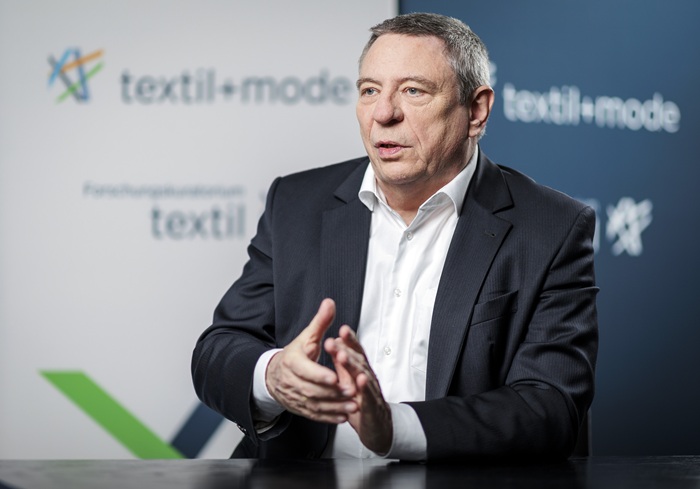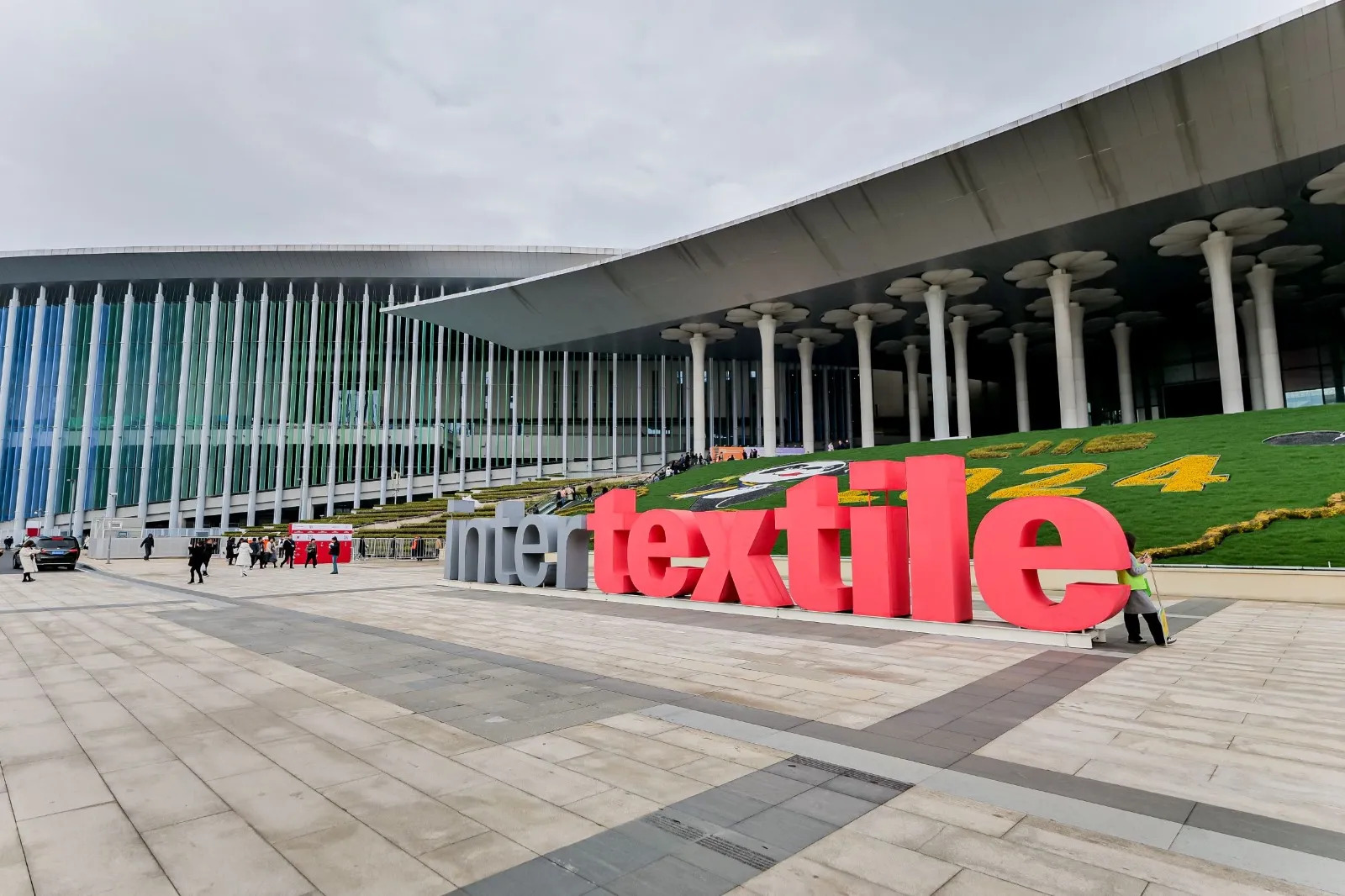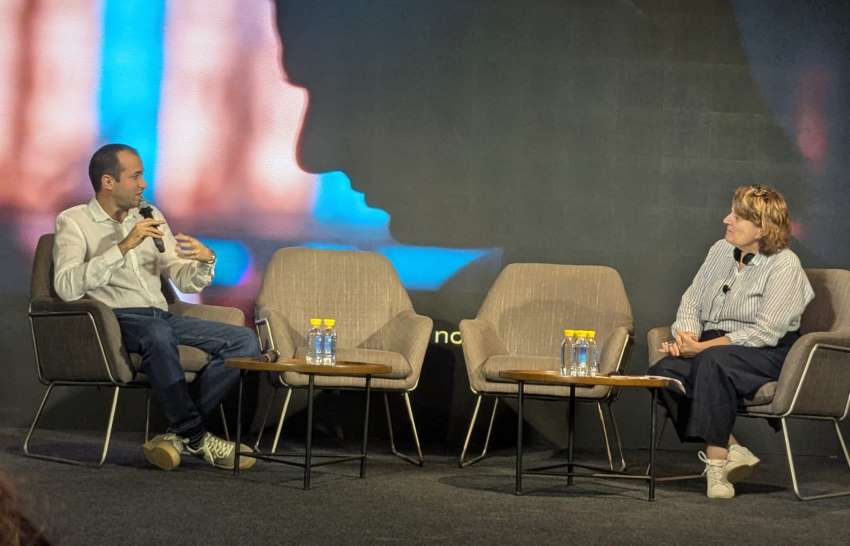FW
The Woolmark Company will celebrate Wool Week from May 24 at 39 centres across Australia and New Zealand celebrating the growers who produce the fibre and the designers who use it.
Westfield will join the campaign as a major partner, releasing its wool-focused winter campaign. Nine centres of the company across Australia and New Zealand will host events and activations including extreme knitting workshops, visual merchandise displays showcasing retailer wool product, interior design workshops, and fashion exhibitions.
Westfield Sydney will host artist, Natalie Miller, who’ll create a live knitting installation, whilst Westfield Doncaster will showcase a collection of International Woolmark Prize garments, in a celebration of the world’s best emerging fashion designers. The event aims to reconnect consumers with the versatility and natural benefits of Australian wool and encourages conscious purchasing decisions.
Canton Fair was held in China, April 15 to May 5. Chinese textile and garment products recorded a 4.1 per cent year-on-year sales increase and accounted for 4.7 per cent of the total volume of transactions at the event.
Many textile and garment companies that attended this session of the Canton Fair had developed new environmental-friendly and high-quality textile fabrics, demonstrated technical prowess, and improved their support services to meet the demands of the international market.
The fair helped companies communicate with global suppliers. It helped them understand industry trend and differentiations among products, get to associate with valuable partners, and convert competing relationships to partnerships through service segmentation.
Vendors in attendance demonstrated advanced manufacturing and customization capabilities, an ability to supply boutique and premium products, robust R&D programs and quick response to inquiries and comprehensive customer service support.
Chinese textile and garment exports are recovering at a very healthy pace. Exports of Chinese textile and garment products grew at a rate of 4.23 per cent year-on-year in the first four months of 2018. The textile sector achieved year-on-year growth of 11.37 per cent.
Innovate Textile & Apparel Americas, to be organised by World Textile Information Network (WTiN), will be held in Raleigh, North Carolina from May 1-3, 2019.
The event, organised in partnership with the North Carolina State University College of Textiles, will offer an in-depth exploration of digital technology, materials and business strategy, each in a self-contained one-day program.
It will include the Textile 4.0 Conference that will explore emerging digital business models and introduce the latest application opportunities in smart factory development, including robotics, artificial intelligence (AI), the Industrial Internet of Things (IIoT), and virtual or augmented reality.
An event titled Re:Think Materials that will provide expert technical insights for product developers, including market opportunities in connected textiles; conductive fiber and yarn; textiles for energy harvesting and storage; printed textile electronics; and the application possibilities of graphene and other ‘2D’ materials.
A presentation on textile Business Futures in conjunction with top textile and apparel industry consultants Gherzi will provide an intensive one-day introduction for C-level executives to learn about digital business strategy, risk management, return on investment, leadership and culture change.
Lenzing has invested in new capacities for Tencel Luxe filament yarn which was first launched on the market just a few months ago.
Basic engineering for construction of the new facility has already been initiated.
Thanks to Tencel Luxe, Lenzing is currently positioning itself in the premium luxury market and is embedding the issue of sustainability there in combination with superior aesthetics.
The fine filament yarn is comparable to natural silk due to its airy feeling on the skin and the matte finish. It is perfectly suited for very fine fabrics made exclusively from this yarn and as a blending partner with silk, cashmere and wool.
With Tencel Luxe filaments, luxury brands realized what opportunities they would have by using this yarn made of the renewable raw material wood.
For this reason, demand was already so high that Lenzing decided to take an intermediate step to expand capacities before building a large commercial production plant.
The decision to construct a new line will serve as the basis for generating a three-fold increase in capacity compared to the previous volume. The additional capacity will be available to customers at the end of next year.
As Lenzing's flagship brand in the textile sector, Tencel will grow beyond fiber types and functional characteristics. It will become a true consumer-focused brand with a promise of something more functional and emotional.
Turkish mill Isko is a member of the ZDHC Foundation. Isko joins forces with other 94 ZDHC contributors, a list including brands, value chain affiliates and associates, to protect consumers, workers and the environment.
This decision highlights the company’s commitment not to use harmful substances as a core part of its holistic Responsible Innovation vision.
Joining ZDHC, companies commit to leading the adoption and implementation of ZDHC tools, which include among others the ZDHC Wastewater Guidelines, the ZDHC Gateway and the ZDHC MRSL.
The ZDHC roadmap to Zero Program aims to advance towards zero discharge of hazardous chemicals in the textile, leather and footwear value chains.
Isko’s denim fabric collection is made with lower impact and alternative raw material options such as organic cotton, recycled cotton and recycled polyester from PET bottles. Isko is the only denim mill in the world to have been awarded both the Nordic Swan Ecolabel and the EU Ecolabel.
The company has a production capacity of 250 million meters of fabric per year with 1,500 high-tech automated looms. Isko has a global presence, with offices in 35 countries. It’s part of the Sanko Group, one of the largest conglomerates in Turkey, active in a wide range of sectors from construction and energy, to packaging, financial services, health care and education.
According to the Readymade Garments Export Council, Europe has been allocated 30 percent of the Egyptian readymade garments’ exports.
The council plans to increase its ability to access the European market in cooperation with all export councils in Egypt, accelerating the completion of the Trade Ministry’s plan to increase Egyptian exports in accordance with the 2020 strategy.
The 2020 strategy was launched in November 2016 by Minister of Trade and Industry Tarek Kabil.
It includes five main components: industrial development, small and medium enterprise (SME) development and entrepreneurship, export development, training and technical education development, and corporate governance and development.
The strategy aims at increasing exports after strengthening the local industry. Exports recorded $22.4 billion in 2017, with an increase of $2 billion, while imports decreased $10 billion to $56 billion, compared to $66 billion in 2016.
Project Effective is a multi-company collaboration to produce more sustainable fibers and plastics for commercial use by using renewable feedstocks and biobased technologies.
With participation from 12 companies, including brands like H&M, Carvico, Vaude and Balsan, Project Effective is one of the broadest industrial-driven efforts to reshape entire product value chains and drive economic growth.
Project Effective includes 12 organizations from eight countries and extends across entire product value chains. Participants include renewable feedstock providers, conversion technologies, makers of intermediate and finished products, major consumer brands and recycling/reuse technologies.
One of the key objectives of Project Effective is to develop a more sustainable nylon, made from bio-based caprolactam produced using renewable feedstocks. The nylon will be validated by brands to make apparel and carpet textiles.
An advantage of Project Effective is the early involvement of major consumer brands, allowing them to contribute valuable customer- and industry-driven perspectives. This brand participation is expected to facilitate broader and faster adoption of sustainable technologies and products. Brands will better understand what monomers, polymers and sustainability initiatives are commercially available, enabling them to develop more effective plans with suppliers regarding bio-based ingredients and materials.
This consortium is an important step toward a more circular economy.
A group of panelists speculated at the Copenhagen Fashion Summit (CFS) about the various impacts that robotics, automation and A.I. may have on the global apparel industry in coming years, highlighting the plight of today's human workers.
All jobs in the industry right from manufacturing to design, to business analysis are likely to change as some tasks will be automated through the use of robotics and artificial intelligence.
Global Fashion Agenda, the organiser of the summit is urging companies throughout the fashion industry to embrace environmentally and socially responsible practices, and maintains that companies like H&M are leading the way.
If the future is to be bright for workers, as well as planet, technological innovation's impact on people within the supply chain must be monitored closely. If it isn't, the heaviest blow will be dealt to workers in garment factories around the world.
Because of the uncertainty over China, supply chain managers in the US are considering a backup plan and eyeing Vietnam as an alternative sourcing destination.
US businesses are sourcing more products and goods from Vietnam, with imports doubling in the last five years. The top products sourced from Vietnam include furniture, textiles, tires and electronics.
But even before the tariff tit-for-tat with China, many companies were looking to Vietnam over the past few years as another place to source goods. Exports from Vietnam to the US totaled 46 billion dollars last year, and that figure is expected to rise to 51 billion dollars by the end of this year.
There are quite a few reasons the Vietnamese market is appealing for businesses. It's one of the world's fastest growing economies. The country is open to foreign investment and strives for transparency and ease of doing business. Its strategic location positions the nation as central to several of the world's main shipping routes.
But sourcing from Vietnam doesn’t come without risk. The quality of suppliers is not very high. Vietnam's evolving economy continues to have issues with sustainability and unsafe or forced labor.
What sourcing managers importing goods from Vietnam are looking for is transparency. They feel that as long as suppliers are transparent, the benefit definitely outweighs the risk.
The US does not wish to concede on its current stance to terminate benefits to the Indian textile industry under the GSP scheme.
The developing and the least-developed countries are allowed to export textiles and other products on a preferential tariff framework by industrialised countries on an MFN (most-favoured-nation) basis that requires all partners be treated on an equal footing.
The donor countries—the US, the European Union (EU), and Japan, among others—want to discontinue the MFN framework that would allow equal treatment for all countries for GSP benefits and introduce “differentiation” wherein they will decide which countries can avail of GSP benefits on their conditions.












